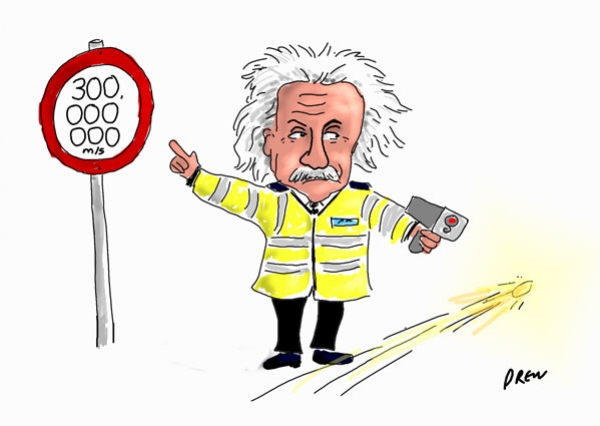Speed of light is absolute. So they said. So we believed. Travelling at a speed of about three hundred thousand kilometers per second, the theory of relativity suggests that the speed of light in vacuum is the same no matter the speed at which an observer travels.
Light travels at a slower speed when travelling through glass and water, but immediately returns to its speed as it travels through free space. Can the theory of relativity be defied?
A
team of Scottish scientists has managed to slow down the speed of light in vacuum using a special mask that altered the shape of photons thus decreasing the speed in vacuum. The groundbreaking experiment, in which: the scientists sent photons – individual particles of light – through a special mask; changed their shape and slowed them to travel at less than the speed of light; is likely to change the way science looks at light. Light may be more complex than we had earlier imagined.
The collaborators from Glasgow and Heriot-Watt universities – are members of the Scottish Universities Physics Alliance. They have published their results in the journal Science Express.
The team compare a beam of light, containing many photons, to a team of cyclists who share the work by taking it in turns to cycle at the front.
Although the group travels along the road as a unit, the speed of individual cyclists can vary as they swap position.
The group formation can make it difficult to define a single velocity for all cyclists, and the same applies to light.
A single pulse of light contains many photons, and scientists know that light pulses are characterized by a number of different velocities.
The team’s experiment was configured like a time trial race, with two photons released simultaneously across identical distances towards a defined finish line.
The researchers found that one photon reached the finish line as predicted, but the structured photon which had been reshaped by the mask arrived later, meaning it was travelling more slowly in free space.
Over a distance of 3.3ft (one metre), the team measured a slowing of up to 20 wavelengths, many times greater than the measurement precision – indicating the result was not an error.
The work demonstrates that, after passing the light beam through a mask, photons move more slowly through space.
Crucially, this is very different to the slowing effect of passing light through a medium such as glass or water, where the light is only slowed during the time it is passing through the material – it returns to the speed of light after it comes out the other side.
The effect of passing the light through the mask is to limit the top speed at which the photons can travel.
This discovery may be extended to wavelets including sound waves. You can imagine applications. Consider an Ultimatum where you can trap sound and light?
